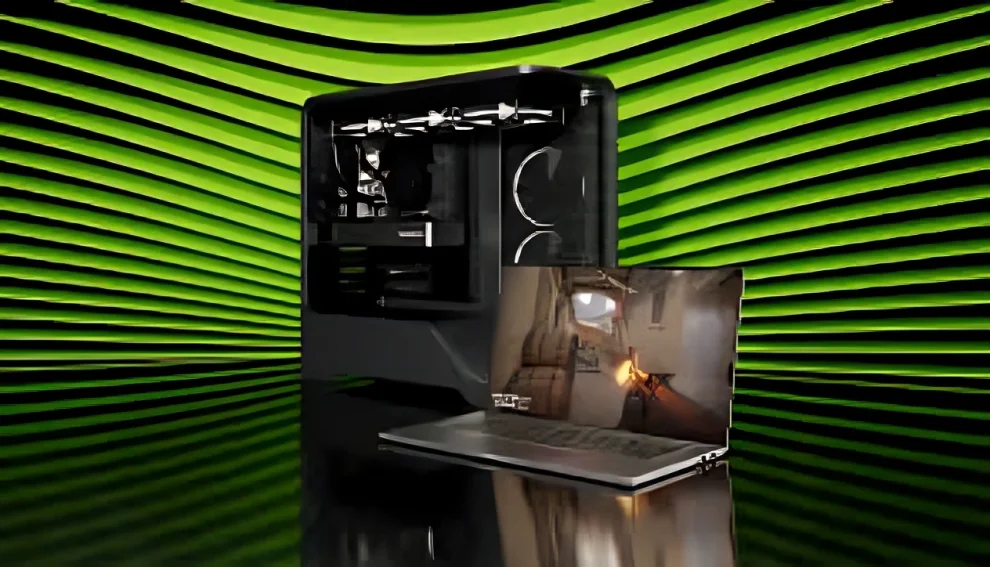Nvidia has officially announced the GeForce RTX 5050, the much-anticipated entry-level graphics card in its next-gen RTX 50 series. Targeted towards budget-conscious gamers, the RTX 5050 promises to bring the power of Ada Lovelace-Next architecture and AI-powered graphics to an affordable price point — all without compromising performance. With this announcement, Nvidia is redefining the expectations from an entry-level GPU.
A Game Changer for Budget Gaming
The GeForce RTX 5050 is built to cater to the massive mid-tier gaming community. While flagship cards like the RTX 5090 steal the headlines with outrageous specs and price tags, the RTX 5050 aims to deliver 1080p ultra gaming and smooth performance in most AAA titles — at a fraction of the cost.
According to Nvidia, the RTX 5050 will feature 8GB of GDDR7 memory, improved ray tracing cores, and DLSS 4 support — the latest version of Nvidia’s AI super sampling technology. This means gamers can now enjoy next-gen visuals and frame rates without breaking the bank.
RTX 5050 Key Specifications
- GPU Architecture: Ada-Next (5nm process)
- CUDA Cores: ~3584 (estimated)
- Memory: 8GB GDDR7
- Memory Interface: 128-bit
- Ray Tracing Cores: 3rd Gen
- DLSS Support: DLSS 4 with Frame Generation
- Expected TDP: Around 120W
While final clock speeds and pricing haven’t been disclosed yet, leaks suggest the RTX 5050 price may start around $199 to $229 USD, making it an excellent value-for-money offering.
Performance That Punches Above Its Class
Early benchmarks and internal testing indicate the RTX 5050 outperforms its predecessor, the RTX 3050, by nearly 40% in raw performance. Games like Cyberpunk 2077, Spider-Man Remastered, and Elden Ring run significantly smoother at ultra settings using DLSS 4.
More impressively, ray tracing performance has seen a notable uplift. This means the RTX 5050 is capable of real-time lighting, shadows, and reflections — features previously limited to higher-end GPUs.
DLSS 4 – The Secret Weapon
Nvidia’s inclusion of DLSS 4 with Frame Generation on the RTX 5050 is a major surprise. DLSS 4 leverages AI and neural rendering to generate new frames and boost FPS, making lower-tier cards perform like premium ones. This gives the RTX 5050 a huge edge in future-proofing for upcoming titles.
Thanks to DLSS 4, even demanding games can achieve smooth 60+ FPS at 1080p and even 1440p in some scenarios.
Ideal for Creators Too
Beyond gaming, the GeForce RTX 5050 is also expected to serve content creators, streamers, and students looking for powerful graphics capabilities. Support for AV1 encoding, hardware-accelerated AI tools, and GPU rendering in tools like Blender, Premiere Pro, and DaVinci Resolve makes it a great pick for light to moderate creative workloads.
Eco-Friendly and Compact Design
Nvidia is also focusing on energy efficiency. The RTX 5050’s reduced power consumption (TDP around 120W) means it will be suitable for compact builds, laptops, and pre-built systems. This makes it perfect for users building their first PC or upgrading older systems without needing a PSU upgrade.
Release Date and Availability
While Nvidia hasn’t confirmed an exact launch date, insiders suggest the GeForce RTX 5050 release date could be as early as Q4 2025. Initial availability will likely be limited, so early buyers may need to pre-order or act fast once listings go live.
Retailers and online stores are already gearing up for demand, and given its specs-to-price ratio, the RTX 5050 could sell out fast just like the 3050 did during its launch window.
Read More: ‘Liver King’ Arrested After Alleged Threats Against Joe Rogan
RTX 5050 Will Disrupt the Budget GPU Market
Nvidia’s announcement of the GeForce RTX 5050 is a bold move that brings top-tier features to the mass market. With advanced DLSS 4, powerful architecture, and a competitive price tag, the RTX 5050 is set to become the best GPU under $250 in 2025.









